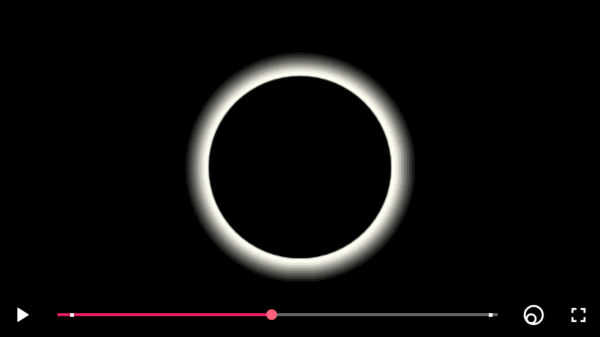-
~90 minutes before totalityPartial eclipse begins
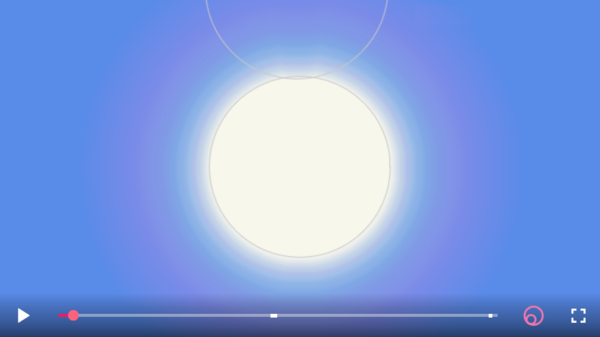
©timeanddate
The moment the edge of the Moon appears to touch the edge of the Sun is called first contact. Apart from the few brief minutes or seconds of totality, eclipse glasses MUST ALWAYS be used for looking at the Sun.
Note: the timings and images shown on this page are rough approximations.
-
~60 minutes before totalityObscuration at 25%
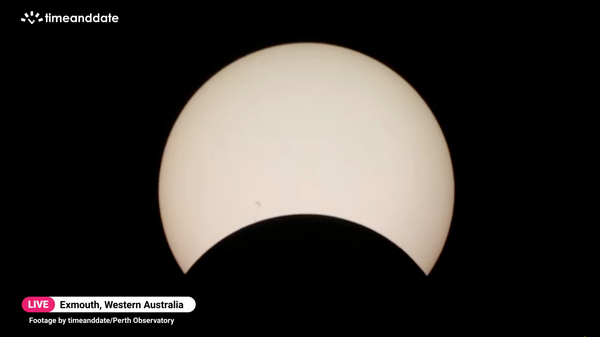
©timeanddate/Perth Observatory
The eclipse progresses: one-quarter of the area of the Sun’s disk is now covered by the Moon.
-
~50 minutes before totalityTemperature changes

©iStockphoto.com/narith_2527
As the Moon continues to cover up the Sun, the amount of solar energy reaching the ground decreases, causing a drop in air temperature.
-
~45 minutes before totalitySharp & blurry shadows
Shadow edges that are aligned with the Sun’s narrowing crescent start to become sharper; edges that lie at right angles to the Sun’s crescent shape remain more blurry.
-
~30 minutes before totalitySky darkens
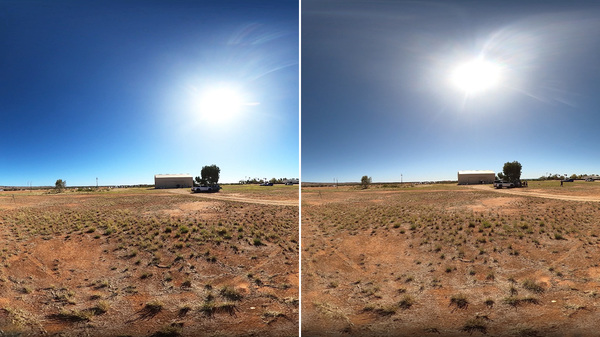
©timeanddate
With around two-thirds of the Sun’s disk now covered by the Moon, the sky starts to become noticeably darker.
-
~20 minutes before totalityTemperature, humidity & wind
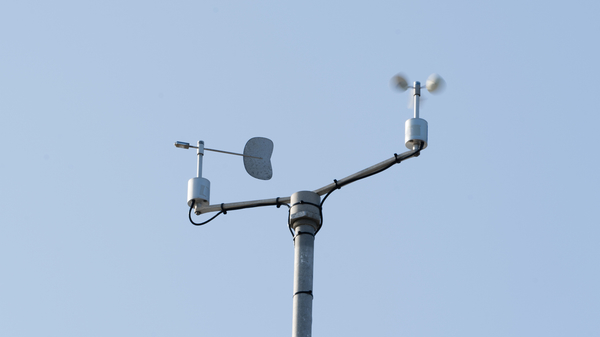
©iStockphoto.com/Moorefam
Conditions on the ground and in the atmosphere continue to change as the amount of solar energy decreases—the Moon’s shadow can cause small changes in wind strength and direction.
-
~15 minutes before totalityLight level & colors
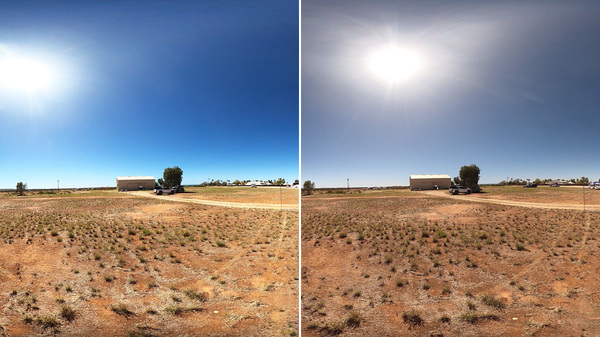
©timeanddate
The surroundings start to darken, while colors begin to turn grayish; the Moon now eclipses more than three-quarters of the Sun’s disk.
-
~10 minutes before totalityNature reacts
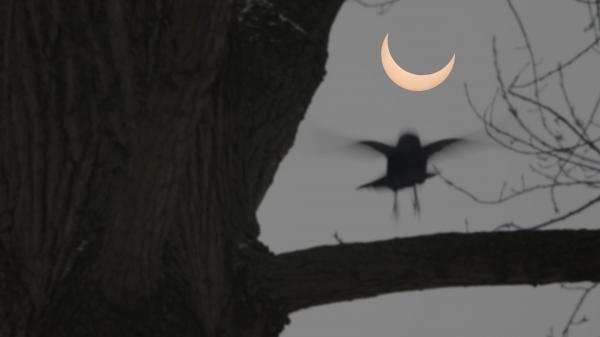
©iStockphoto.com/sieprawski
Night comes early: the behavior of animals and plants starts to be affected by falling levels of light.
-
~5 minutes before totalityDark shadow on horizon
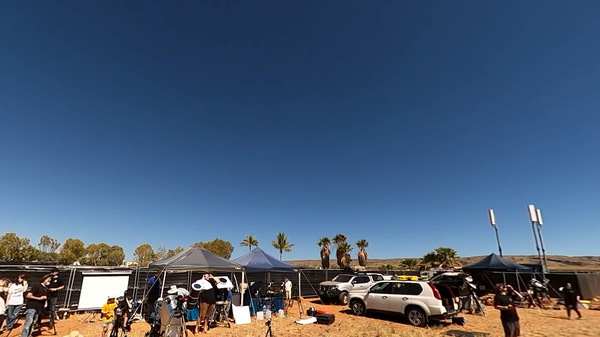
©timeanddate
The Moon’s inner umbral shadow may become visible as it approaches from over the western horizon.
-
~1 minute before totalityShadow bands
Faint waves of light—the result of turbulence in Earth’s atmosphere—may be seen moving across the ground and walls.
-
~20 seconds before totalityCorona appears
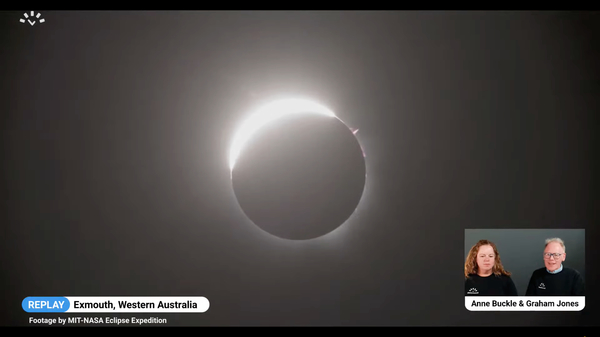
©timeanddate/MIT-NASA Eclipse Expedition
The solar corona—the outer part of the Sun’s atmosphere, normally hidden from view—starts to become visible.
-
~15 seconds before totalityDark shadow sweeps in
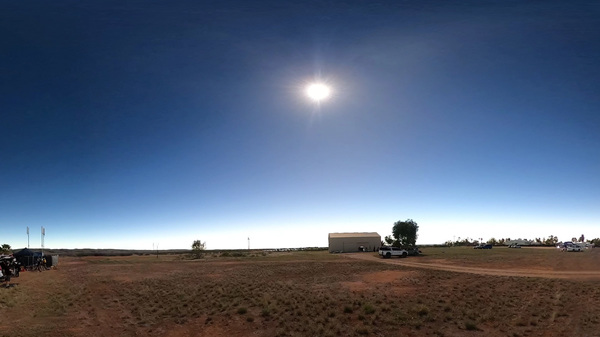
©timeanddate
The Moon’s umbral shadow sweeps in from a western direction and envelops the surroundings.
-
~10 seconds before totalityDiamond ring
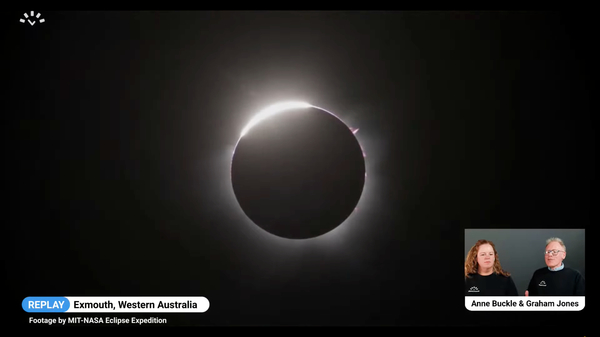
©timeanddate/MIT-NASA Eclipse Expedition
The solar corona forms a ring around the dark Moon, while the remaining sliver of sunlight dazzles like a jewel. Eclipse glasses MUST be kept on for observing the diamond ring and the Baily’s beads that follow.
-
~5 seconds before totalityBaily’s beads
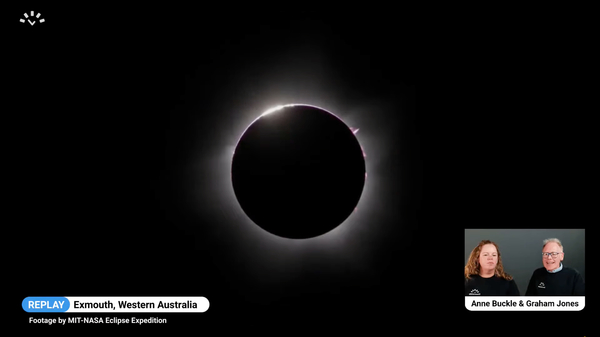
©timeanddate/MIT-NASA Eclipse Expedition
Just before totality, the final beads of sunlight stream through valleys along the edge of the Moon.
-
TotalityTotality begins
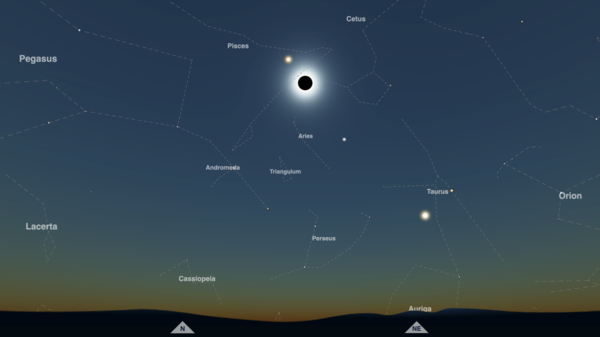
©timeanddate
The moment the edge of the Moon covers all of the Sun is called second contact. At this point—when the Sun’s disk is completely covered—eclipse glasses should be removed.
-
TotalityChromosphere appears
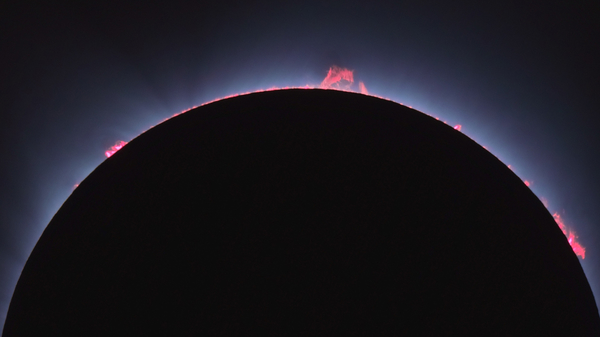
©Unsplash.com/karen_kayser
The chromosphere—a thin, red layer of the Sun’s atmosphere—may be visible for the first few seconds after totality begins.
-
TotalityProminences
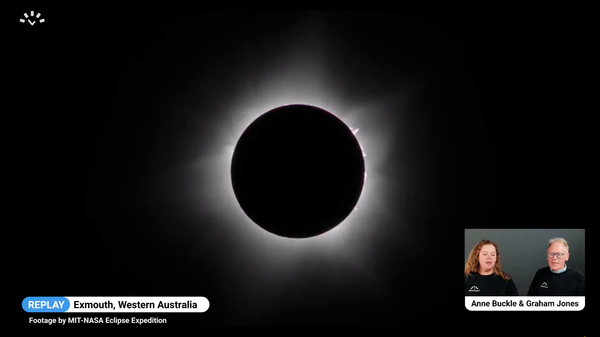
©timeanddate/MIT-NASA Eclipse Expedition
Reddish, tongue-like prominences may poke out from the Sun during totality; these structures are supported by magnetic fields in the solar corona.
-
TotalityCorona
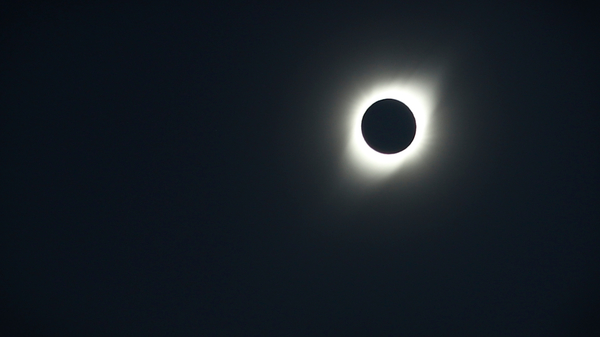
©Anne Buckle/timeanddate
It doesn’t get completely dark during totality: the ghostly solar corona shines as brightly as a Full Moon.
-
TotalityStars & planets
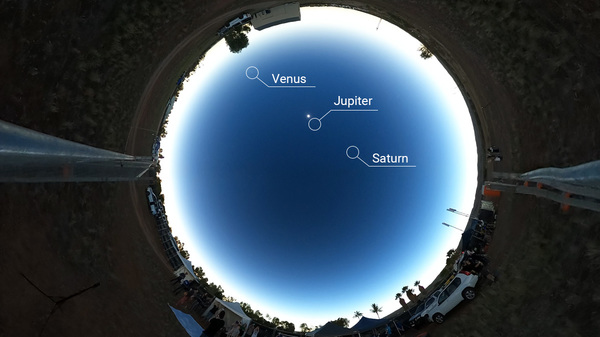
©timeanddate
Stars and planets—including Mercury and Venus—may be visible in the darkened sky.
-
TotalitySunlight around horizon
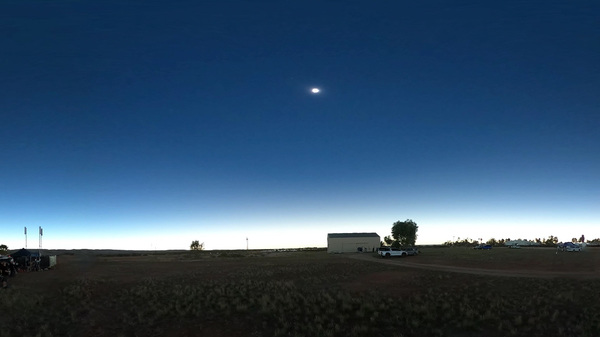
©timeanddate
Colorful skies may be visible in the far distance, around the edge of the Moon’s umbral shadow.
-
TotalityEclipse at maximum
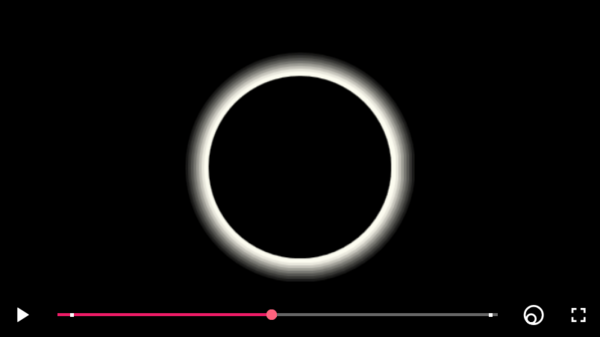
©timeanddate
The deepest point of the eclipse, when the Sun is at its most hidden behind the Moon. This is roughly the halfway point: the features of the eclipse now repeat in reverse order.
-
TotalityEnd of totality approaches
It is important to know how long totality lasts at a particular location. Before the outer edge of the Sun reappears at the end of totality, eclipse glasses MUST be put back on.
-
TotalityChromosphere reappears
In the final few seconds before the end of totality, the chromosphere may briefly become visible again.
-
TotalityTotality ends
The moment the edge of the Moon exposes the Sun is called third contact. The eclipse switches from being total back to partial.
-
As totality endsBaily’s beads
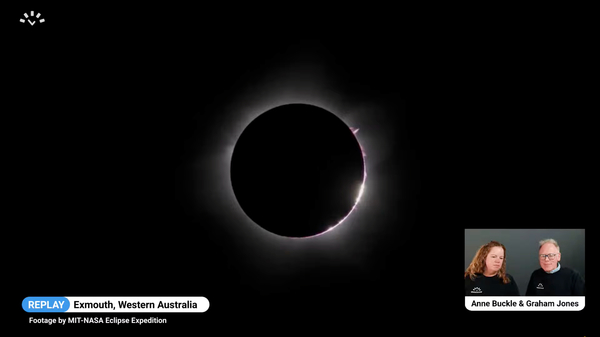
©timeanddate/MIT-NASA Eclipse Expedition
A new set of Baily’s beads appears along the edge of the Moon, signaling the start of the second partial phase of the eclipse.
-
As totality endsShadow bands
These faint waves of light may reappear for a minute or so, rippling along the ground and walls.
-
~5 seconds after totalityDiamond ring
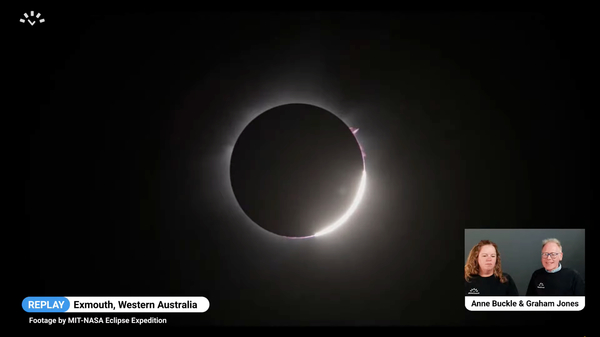
©timeanddate/MIT-NASA Eclipse Expedition
Baily’s beads come together to form another dazzling jewel of sunlight, with the solar corona again forming a ring around the Moon.
-
~15 seconds after totalityDark shadow sweeps out
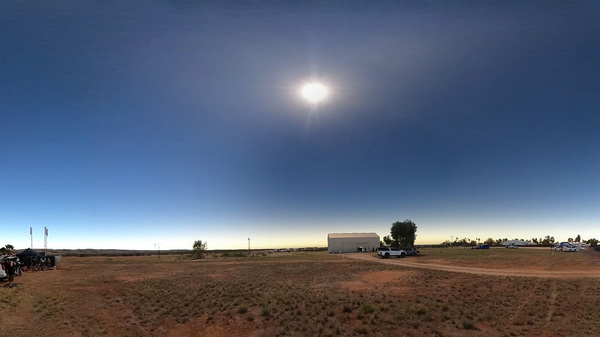
©timeanddate
The Moon’s umbral shadow sweeps out, heading toward the horizon in an eastern direction.
-
~20 seconds after totalityCorona fades
The ring of the corona around the Moon disappears from view—the next opportunity to see it will be the next total solar eclipse.
-
~5 minutes after totalityDark shadow on horizon
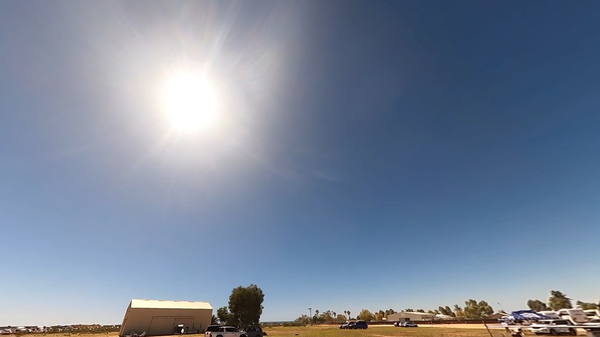
©timeanddate
The Moon’s umbral shadow may be visible in the distance as it retreats over the eastern horizon.
-
~10 minutes after totalityNature returns to normal
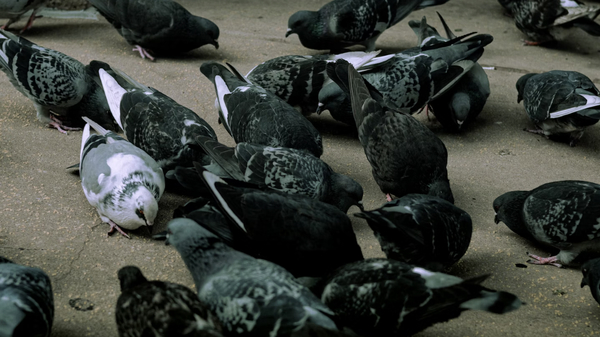
©Unsplash.com/Bruno_Guerrero
Night turns to day once again: animals and plants are going back to their usual patterns of behavior.
-
~15 minutes after totalityLight levels & temperature
The conditions of the sky and surroundings are returning to normal; temperature changes are delayed slightly by an effect called thermal lag.
-
~60 minutes after totalityObscuration at 25%
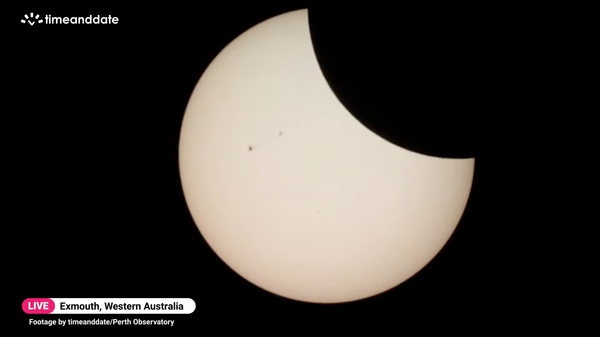
©timeanddate/Perth Observatory
With around half an hour to go until the eclipse reaches its end, one-quarter of the Sun’s disk remains covered by the Moon.
-
~90 minutes after totalityPartial eclipse ends
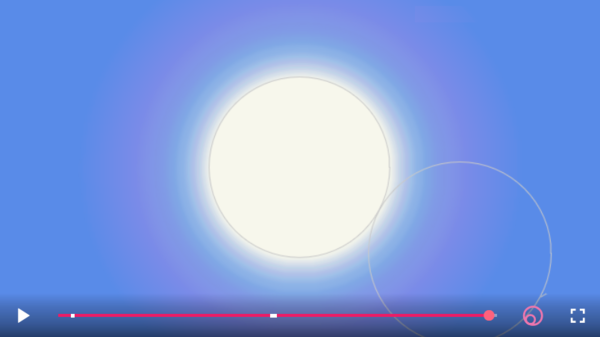
©timeanddate
The moment the edge of the Moon leaves the edge of the Sun is called fourth contact. Although the eclipse has finished at this location, the Moon’s shadow continues to travel across the globe from west to east.


